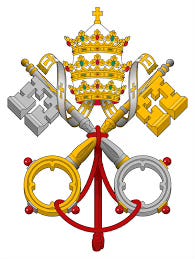After Francis: Why the Latin Mass will Define the Next Papacy
A Faith Grounded in Compassion Withers Without Its Roots
A CROSSROADS FOR CATHOLICISM
As we all know, Pope Francis passed away on Easter Monday at the age of 88. While many conservative Catholics criticized him for being lenient on social issues and emphasizing “compassion,” Pope Francis did uphold the Church’s most basic teachings—something for which Catholics and non-Catholics alike can be grateful. However, the most significant question for the Church going forward will not be whether to continue Francis’ legacy of compassion, but rather if the next Pope will follow Francis’ lead in restricting the Latin Mass. If the tradition of the Latin Mass is eroded, what will anchor the Church’s future?
THE LATIN MASS: MORE THAN A RITE—A FOUNDATION
For my non-Catholic readers, here is a brief explanation: the Latin Mass is the traditional, pre-Vatican II liturgy celebrated in Latin. It is longer than the modern Novus Ordo Mass, which, since Vatican II, is celebrated in the local language and is now the norm worldwide.
In 2021, Pope Francis issued the apostolic letter Traditionis Custodes, which restricted the celebration of the Traditional Latin Mass. Local bishops were given authority to decide when and where the Latin Mass could be celebrated, but under strict Vatican oversight. Bishops were instructed not to establish new groups or venues for the Latin Mass, and priests ordained after the letter’s issuance needed explicit Vatican permission to celebrate it—permission that was generally limited in scope and duration. The Vatican later clarified that some sacraments must be celebrated in the Novus Ordo, not the Latin Mass.
Pope Francis argued that these restrictions were intended to unify the Church and prevent division between the two forms of the Mass. He even described attachment to the Latin Mass as “nostalgic disease.” Yet, as many Catholics have observed, Novus Ordo masses vary widely. Some use lay ministers for Holy Communion, others only clergy. Some feature traditional organ music, others contemporary bands. Some have communion rails; others simply line up and receive in the hand. The “unity” that Francis spoke of is not reflected in practice—depending on your diocese, or even your parish, you can witness two very different celebrations of the Mass.
The Latin Mass is not a “nostalgic disease.” It is a liturgical North Star that grounds the more conservative Novus Ordo masses. Many traditional Novus Ordo parishes borrow elements from the Latin Mass, such as chant, ad orientem posture, and communion rails. Without the Latin Mass as a reference point, these traditional Novus Ordo masses risk being diluted over time.
THE DOMINO EFFECT OF ABANDONING TRADITION
Restricting the Latin Mass risks isolating traditionalists and signals that tradition—a pillar of the Catholic faith—is negotiable. Without the Latin Mass, even the more traditional Novus Ordo masses may begin to change, drifting further from their roots. Over the decades, incremental changes can erode continuity, leaving no “pure” tradition in the liturgy.
This is especially concerning because tradition is precisely what many young people are seeking today. The Catholic Church has seen a significant influx of young people joining or returning in recent years. In a society adrift, tradition offers connection to the past, moral clarity, and a sense of the sacred. Eliminating the Latin Mass undermines the very tradition that draws people to the Church.
As an anecdotal example, consider the University of Nebraska-Lincoln Newman Center. This year, 95 students were in their OCIA program, preparing to fully join the Catholic Church. I’ve attended mass at the Lincoln Newman Center, and it was one of the most traditional Novus Ordo Masses I’ve seen. In fact, as a general rule, the Lincoln diocese is more traditional than my home diocese of Omaha—and its thriving. Lincoln has 34 seminarians, compared to Omaha’s 22, despite serving a much smaller population (74,000 vs. 230,000). One visit to Mass in Lincoln demonstrates the impact of tradition: it fosters enthusiasm and, more importantly, belief. The contrast between Lincoln and Omaha shows that the Church must lean into tradition, not abandon it.
COUNTERARGUMENTS AND NUANCE
Some argue that the Church must modernize to stay relevant. Yet, the evidence from Lincoln suggests that it is tradition, not modernization, that attracts people. Others, including Pope Francis, claim that liturgical uniformity is necessary. But as noted, the Novus Ordo is anything but uniform. If you attended mass in Omaha and then in Lincoln, you might not even recognize the same rite—especially during Communion, one of the most central parts of the mass.
The stability provided by the Latin Mass allows for organic growth. With the Latin Mass as the root, people can find the liturgy that speaks to them—vernacular or Latin, traditional or contemporary. In every version, the same miracle occurs. Unity is found in the Eucharist, not in the exact form of the celebration.
THE PATH FORWARD: A PROPOSAL FOR THE NEW POPE
The next Pope must recognize that tradition is drawing people to the Church, not driving them away. No one is leaving because of the Latin Mass; in fact, some are joining precisely because of it.
The new Pope should restore the Latin Mass and acknowledge its role in preserving continuity. Local bishops should be empowered to permit the Latin Mass without Vatican micromanagement. Pope Benedict XVI, Francis’ predecessor, fostered coexistence between the Latin Mass and Novus Ordo communities. There is no reason for friction between the two. The next Pope should follow Benedict’s lead and encourage coexistence.
Continuing Francis’ legacy of compassion over condemnation is a fine goal for the new Pope. But a faith that prioritizes compassion must also honor its roots.




